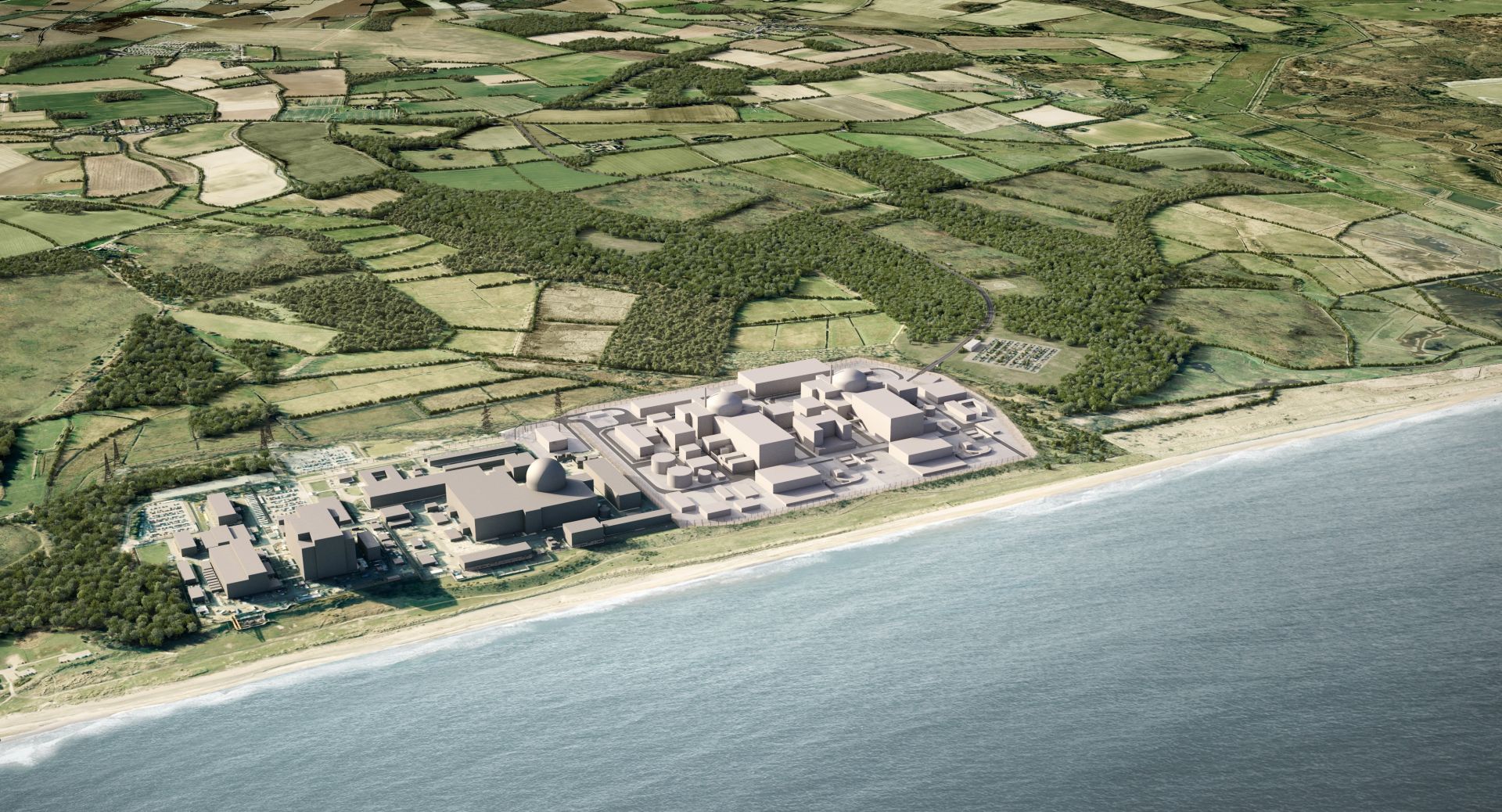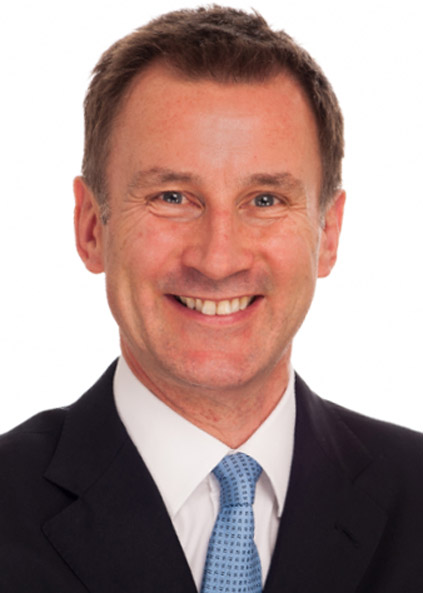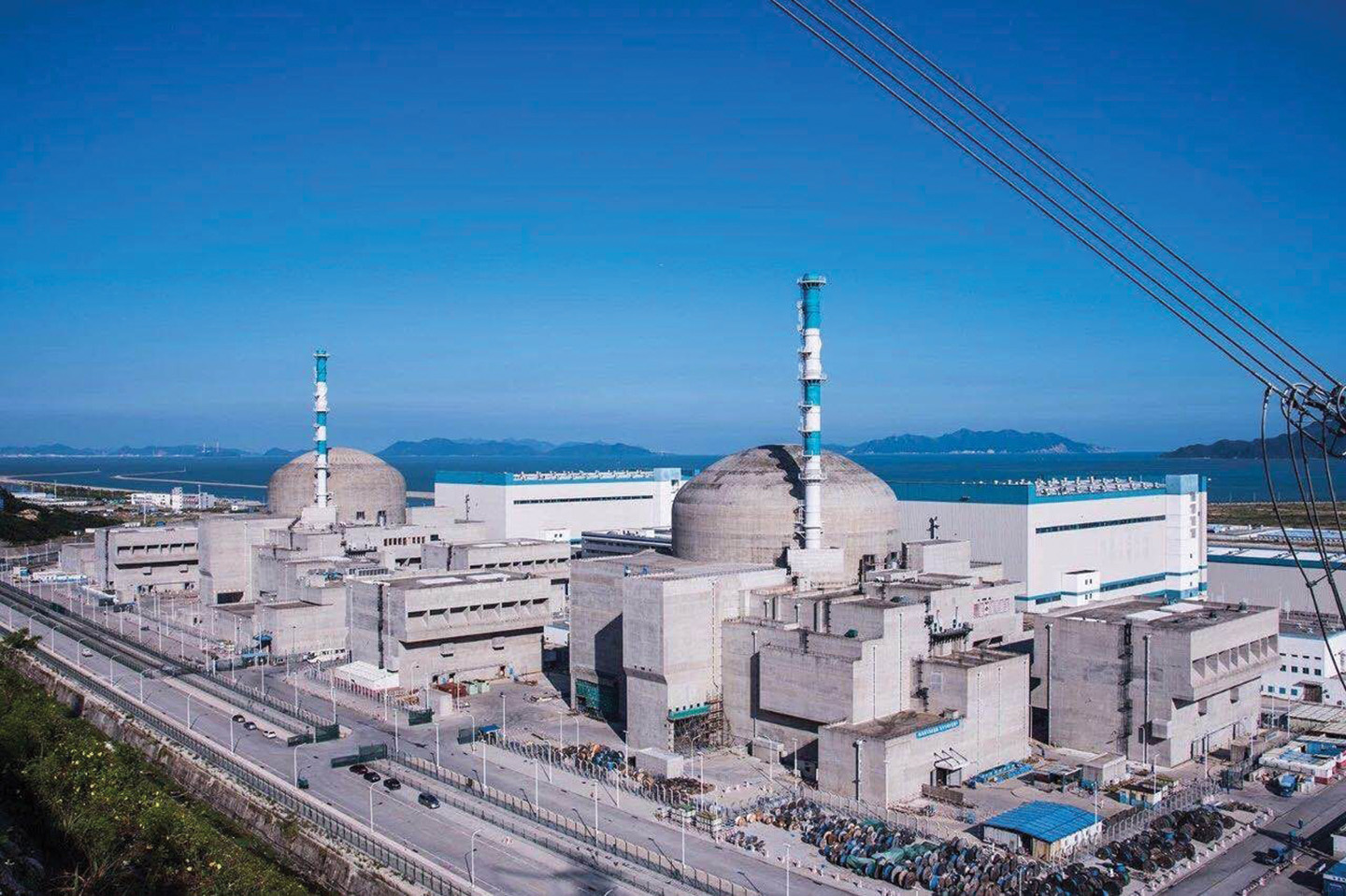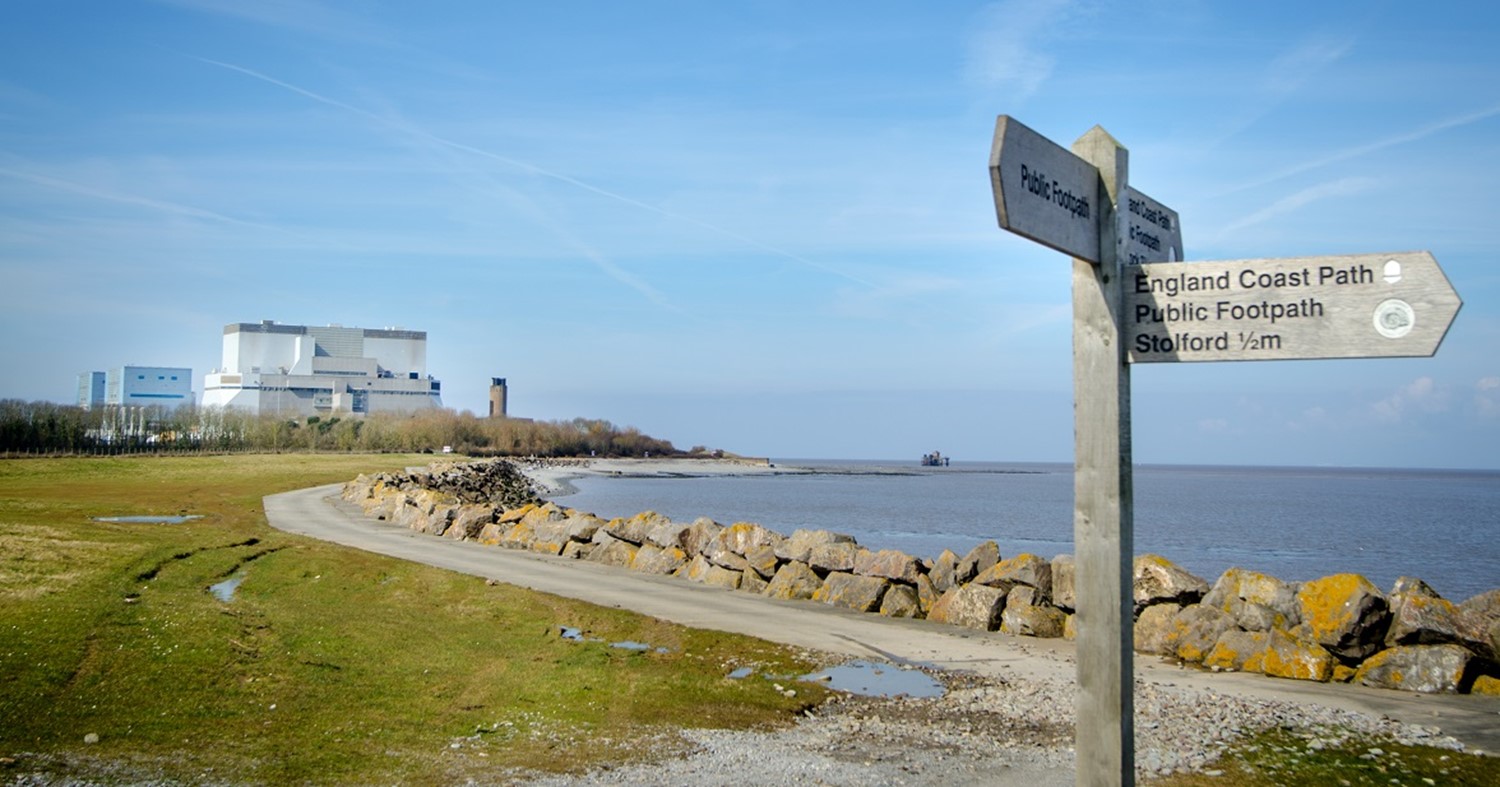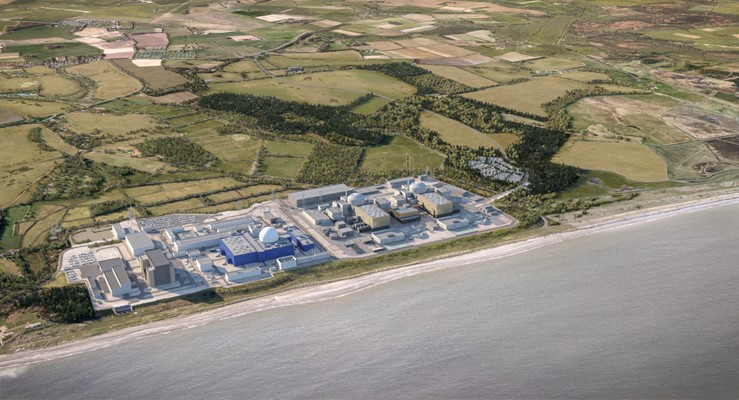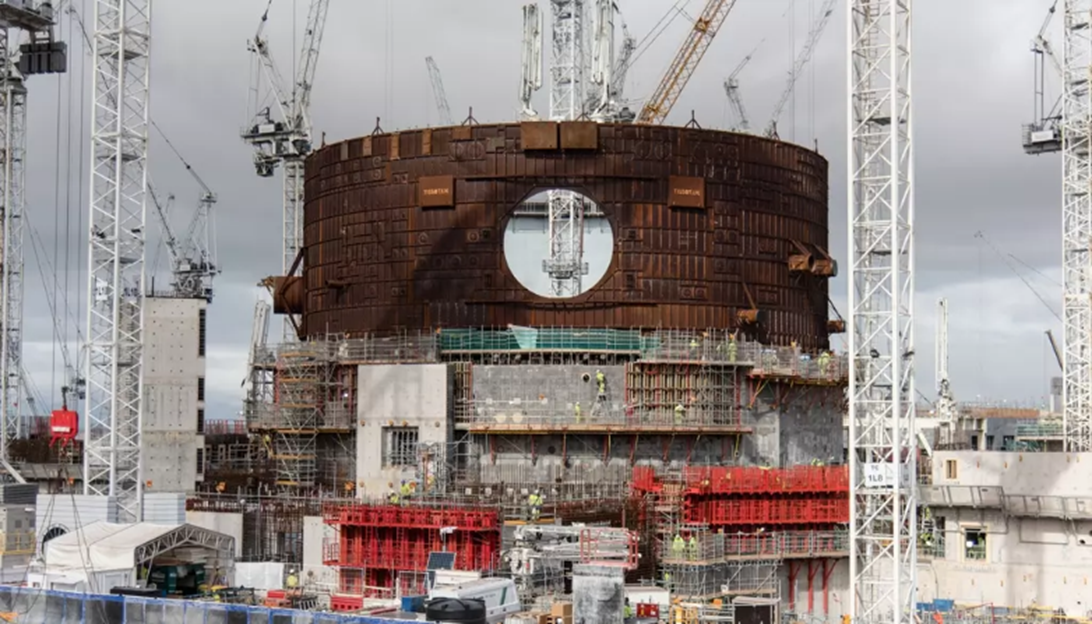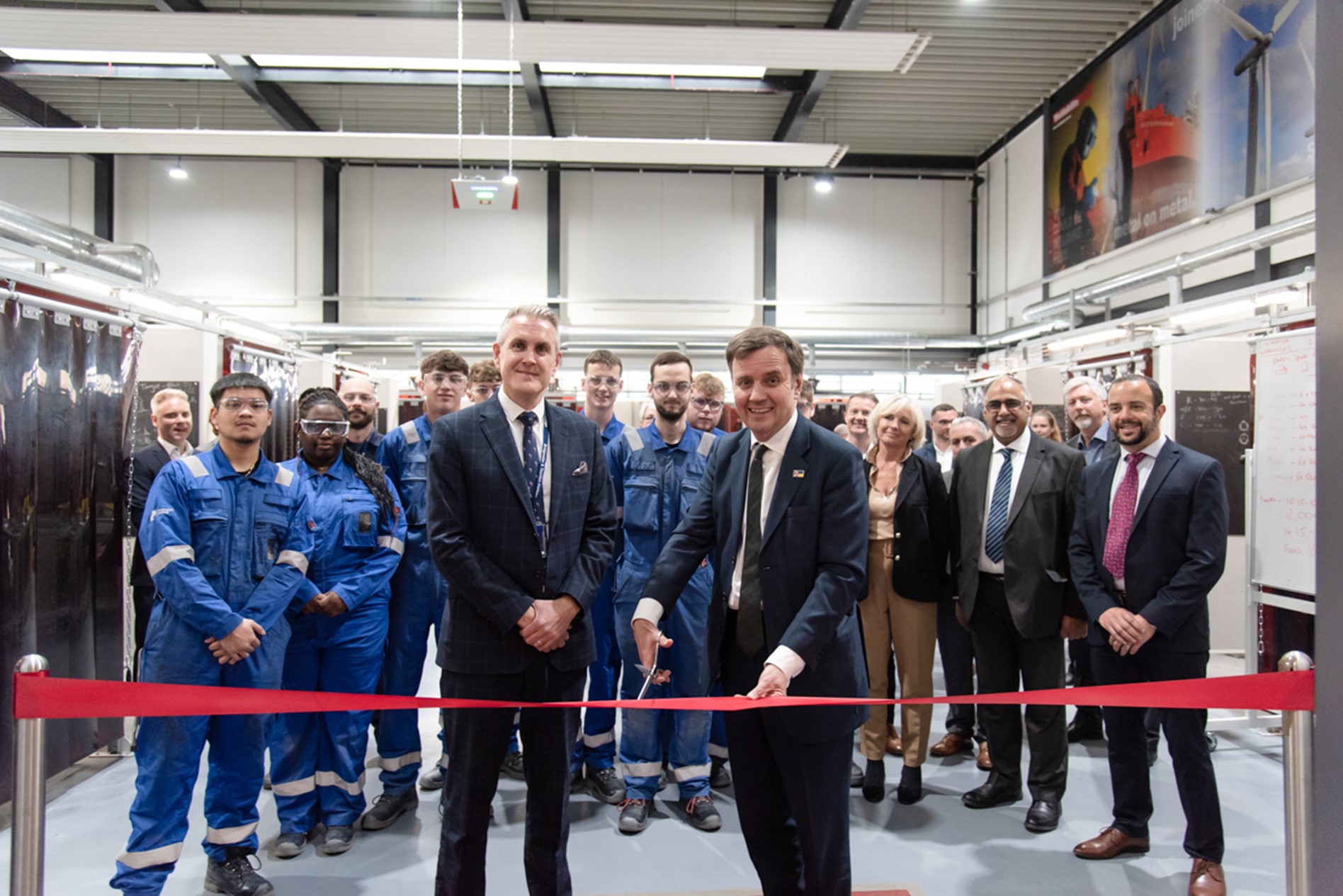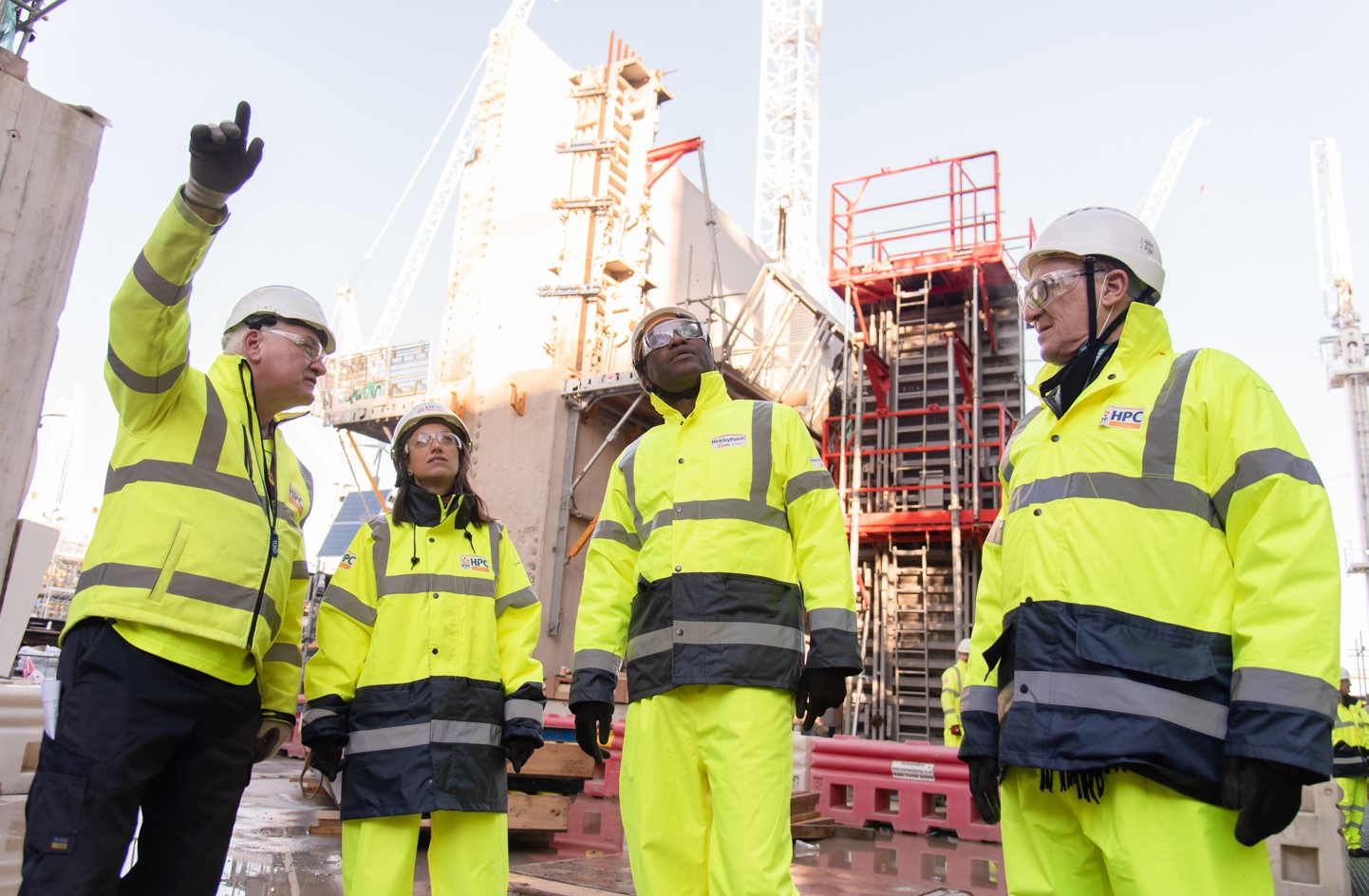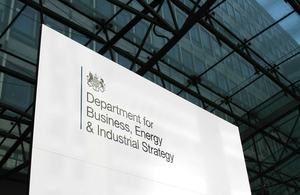A computer-generated rendering of the Sizewell site on the Suffolk coast. Sizewell A and B are to the left and center (respectively) in this image; the section to the right is the Sizewell C area. (Image: EDF Energy)
French nuclear developer Framatome is slated to deliver key equipment for Sizewell C Ltd.’s two large reactors planned for the United Kingdom’s Suffolk coast.
The agreement, reportedly worth multiple billions of euros, was announced this week and will involve Framatome from the design phase until commissioning. The company also agreed to a long-term fuel supply deal. Framatome is 80.5 percent owned by France’s EDF and 19.5 percent owned by Mitsubishi Heavy Industries.
Workers place the dome atop Hinkley Point C’s first reactor building on December 15. (Photo: EDF Energy)
EDF Energy’s new nuclear build megaproject at Hinkley Point C last Friday moved forward—or, more literally, upward then downward—when workers, with a substantial assist from Big Carl, the world’s largest crane, successfully lifted the C1 reactor building’s 47-meter-wide, 245-ton steel dome into place.
A computer-generated rendering of the Sizewell site on the Suffolk coast. Sizewell A and B are to the left and center (respectively) in this image; the section to the right is the Sizewell C area. (Image: EDF Energy)
In the second tranche of planned investment in Britain’s nuclear sector this summer, the U.K. government has made available £341 million (about $426 million) of previously allocated funding for development work on the proposed Sizewell C project in Suffolk, England.
A rendering of the Sizewell site on the Suffolk coast. Sizewell A and B are to the left and center (respectively) in the image; the section to the right is Sizewell C. (Image: EDF Energy)
The U.K. government recently confirmed a further £170 million (about $216 million) investment of previously allocated funding for development work on the proposed Sizewell C nuclear power plant project in Suffolk, England.
A rendering of the Sizewell site on the Suffolk coast. Sizewell A and B are to the left and center (respectively) in the image; the section to the right is Sizewell C. (Image: EDF Energy)
The British government has announced an investment of £679 million (about $828 million) in the proposed Sizewell C nuclear plant in Suffolk, England, confirming chancellor of the exchequer Jeremy Hunt’s remarks on the project in his November 17 Autumn Statement.
The Taishan nuclear power plant in China. (Photo: CGN)
China’s Taishan-1, which was shut down last summer due to damaged fuel rods, resumed operations on August 15.
The plant briefly made headlines last summer—as much for the damage inside the reactor as for the media fallout. In June 2020, plant operators found damage to the cladding on about five of the 60,000 fuel rods in Taishan-1, one of the plant’s two 1,660-MW EPRs. What happened next seemed like a bad game of “telephone.”
EDF Energy’s Hinkley Point B nuclear power station, in Somerset, England. (Photo: EDF Energy)
By all accounts the most productive nuclear power plant in British history, Somerset’s Hinkley Point B station closed for good on August 1, with the shutdown of its B1 unit, a 485-MWe advanced gas-cooled reactor. (The plant’s B2 unit, a 480-MWe AGR, was shuttered early last month.)
The station employed around 500 staff and 250 contractors and contributed approximately £40 million (about $48.7 million) per year to the Somerset economy, according to EDF Energy, owner and operator of the United Kingdom’s power reactor fleet.
A computer-generated rendering of the Sizewell site on the Suffolk coast. Sizewell A and B are to the left and center (respectively) in this image; the section to the right is the Sizewell C area. (Image: EDF Energy)
The U.K. government has granted a development consent order (DCO) for EDF Energy’s proposed Sizewell C plant near Leiston in Suffolk, moving the new nuclear build project closer to a reality.
Nuclear New Build (NBB) Generation Company, an EDF Energy subsidiary, submitted the DCO application to the government’s Planning Inspectorate in May 2020, setting out the range of measures the project would implement to mitigate construction effects and maximize community benefits. The Planning Inspectorate accepted the application in June 2020 and completed its examination in October 2021. Recommendations were made to the secretary of state for business, energy, and industrial strategy this February.
Hinkley Point C’s Unit 2, in March of this year. (Photo: EDF Energy)
The target date for the start of electricity generation at Hinkley Point C’s Unit 1 reactor has been moved back to June 2027, following the completion of a schedule and cost review of the new nuclear build project, EDF announced last week.
While the review considered the main aspects of the project to construct two 1,630-MWe EPRs in Somerset, England, the schedule and cost of electromechanical works and of final testing were not examined, according to the utility.
U.K. energy minister Greg Hands cuts the ribbon on the Welding Centre of Excellence at Bridgwater & Taunton College’s campus. (Photo: EDF Energy)
The United Kingdom’s energy minister, Greg Hands, recently presided over the opening of one of three new training centers in England aimed at supporting EDF Energy’s Hinkley Point C nuclear build project in Somerset. The centers, according to EDF, will provide locals with the skills necessary to join the ranks of about 4,000 additional workers expected to be needed for the next phase of the power station’s construction. Hands unveiled the Welding Centre of Excellence, located on the Bridgwater & Taunton College campus in Bridgwater.
The first steel ring section of the Unit 2 reactor building was installed in November 2021. (Photo: EDF Energy)
The United Kingdom’s Office for Nuclear Regulation (ONR) has granted permission for the start of bulk mechanical, electrical, and HVAC component installation work at the Hinkley Point C site in Somerset, England, where two 1,630-MWe EPRs are under construction. Thus far, most of the activity at Hinkley Point C has been in the field of civil construction.
This new phase, according to ONR, will require a workforce of up to 4,000 during peak times, including welders, pipe fitters, and electricians. The work is to be accomplished over a three-year period, with NNB Genco—the EDF Energy subsidiary set up in 2009 to build and operate Hinkley Point C—teaming up with four suppliers: Balfour Beatty Bailey, Doosan, Cavendish, and Altrad.
From left: Nigel Cann, delivery director at Hinkley Point C, Helen Whately MP, Kwasi Kwarteng MP, and Jean-Bernard Lévy, chairman and chief executive officer of EDF. (Photo: EDF)
Despite last year’s announcement from EDF Energy that the startup of Unit 1 at Hinkley Point C would likely be delayed (from late 2025 to June 2026), current progress at the site is receiving praise from the U.K. government.
On January 13, Kwasi Kwarteng, secretary of state for business, energy, and industrial strategy, and Helen Whately, exchequer secretary of the treasury, toured the nuclear new-build project, accompanied by Jean Bernard Lévy, EDF’s chairman and chief executive.




